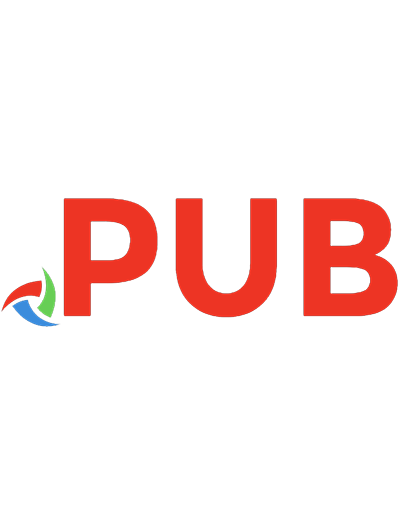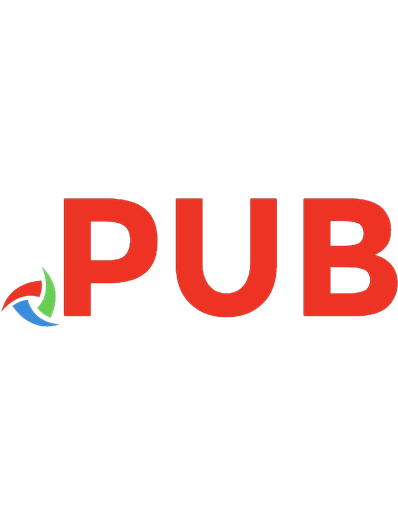Advanced Signal Processing for Industry 4.0: Evolution, Communication Protocols, and Applications in Manufacturing Systems 9781780176109, 9781780176116, 9781780176123
Digital transformation is essential for any organization looking to stay competitive and succeed in the modern world. Th
369 116 10MB
English Pages 216 Year 2023
Table of contents :
Front Cover
Half-Title Page
BCS, The Chartered Institute for It
Title Page
Copyright Page
Contents
List of figures and tables
Author
Foreword
Acknowledgements
Who is this book for?
How to use this book
PART I YOUR INTRODUCTION TO SUPER USER NETWORKS
1. WHY DO WE NEED SUPER USERS?
Influence end users
Get buy-in
Local expertise
Cross-functional collaboration
Continuous end user training
Deployment during rollout
Support service
Maintain best practice
Retain knowledge
Talent development
Retain staff
Increase end user knowledge
Enhance business process understanding
Cost of errors
When not to use Super Users
2. IS A SUPER USER THE RIGHT ROLE FOR YOUR SOFTWARE PROJECT?
Which role is best for my project?
3. WHAT IS THE ROADMAP FOR USING A SUPER USER NETWORK?
Initiation phase
Planning phase
Build phase
Testing phase
Training phase
Go Live phase
Hypercare phase
Business as usual phase
4. WHAT WILL A SUPER USER DO?...
Stage 1…Throughout the project?
Stage 2…During system build?
Stage 3…During the testing phase?
Stage 4…During the training phase?
Stage 5…During the cutover phase?
Stage 6…When we Go Live?
Stage 7…When we move into business as usual?
PART II IMPLEMENTING A SUPER USER NETWORK
5. HOW DO WE RECRUIT AND SELECT OUR SUPER USERS?
How many Super Users do we need?
Identification criteria
Nominations
Volunteers
Time needed for role
Variety of roles
Reward and compensation
Onboarding
6. WHAT DOES A SUPER USER ROLE PROFILE LOOK LIKE?
7. HOW CAN WE CREATE A SUPER USER COMMUNITY?
Onboarding
Community calls or meetings
Problem solving
What’s in it for me?
Empowerment
Accountability
Social activities and team bonding
Social media and communication strategy
8. HOW DO WE DEVELOP A CHANGE MANAGEMENT PLAN?
9. HOW DO WE DEVELOP A COMMUNICATION PLAN?
10. HOW DO WE DEVELOP A TRAINING PLAN?
Preparation for a training plan
Creating a training plan
11. HOW DO WE DEVELOP A SUPER USER EDUCATION PROGRAMME?
12. HOW DO WE DELIVER A TRAIN THE TRAINER COURSE FOR SUPER USERS?
13. HOW DO WE DESIGN ELEARNING FOR SOFTWARE TRAINING?
14. HOW DO WE DELIVER SOFTWARE TRAINING?
General delivery tips
Tips for classroom training
Tips for virtual training
15. HOW DO WE EVALUATE THE TRAINING STRATEGY AND USER ADOPTION?
Evaluating training
ADKAR ratings
Evaluating system adoption
Evaluating company culture
Evaluating user maturity
Present your findings and recommendations
16. HOW DO WE DEPLOY SUPER USERS THROUGHOUT THE SOFTWARE LIFE CYCLE?
Process improvements, process re-engineering and problem solving
Enhancements
Upgrades
Business continuity and disaster recovery planning
Change control
Retirement/decommission
PART III THE THEORY SUPPORTING SUPER USER NETWORKS
17. HOW CAN CHANGE MANAGEMENT THEORY SUPPORT THE SUPER USER MODEL?
Eleven Step Super User Change Model
Kotter’s Change Model
McKinsey 7-S Model
Kurt Lewin’s Model
18. HOW CAN NEUROSCIENCE THEORY SUPPORT THE SUPER USER MODEL?
19. HOW CAN ADULT LEARNING THEORY SUPPORT THE SUPER USER MODEL?
Malcolm Knowles 4 Principles of Andragogy (Teaching Adults)
Jack Mezirow Transformational Learning Theory
David Kolb Experiential Learning Theory
McCall, Lombardo and Eichinger 70:20:10 Model
Kenneth Nowack 55:25:20 Model
20. HOW CAN KNOWLEDGE MANAGEMENT THEORY SUPPORT THE SUPER USER MODEL?
Why do we need a knowledge management strategy?
Types of knowledge management
Methods of knowledge management
Communities of practice theory
Single and double loop learning theory
Unlearning, knowledge dilution and unknowns
It’s not what you know
21. HOW CAN PROJECT FAILURE RESEARCH SUPPORT THE SUPER USER MODEL?
Reported project failures
22. HOW CAN LEADERSHIP THEORY SUPPORT THE SUPER USER MODEL?
Situational theory of leadership
Transformational leadership theory
Servant leadership theory
PART IV SUSTAINING THE SUPER USER NETWORK
23. HOW WILL OTHER PROJECT ROLES WORK WITH YOUR SUPER USERS?
24. WHAT SYSTEMS CAN I USE SUPER USERS WITH?
25. HOW CAN SUPER USERS IMPROVE SYSTEM ADOPTION?
26. HOW CAN WE SUSTAIN OUR SUPER USER COMMUNITY?
27. CONCLUSION
Acronyms and glossary of terms
References
Further reading
Index
Back Cover









![Communications, Signal Processing, and Systems: Proceedings of the 12th International Conference on Communications, Signal Processing, and Systems [1]
9819975395, 9789819975396](https://dokumen.pub/img/200x200/communications-signal-processing-and-systems-proceedings-of-the-12th-international-conference-on-communications-signal-processing-and-systems-1-9819975395-9789819975396.jpg)
